Making Subtraction Fun and Effective: Strategies Every Teacher Should Try
Subtraction is more than just “take away.” For young learners, it can be a challenging concept to grasp. Unlike addition, which builds naturally from counting, subtraction requires thinking in reverse, understanding part-part-whole relationships, and making sense of “how many are left.” In this post, we’ll explore fun and effective strategies to teach subtraction, using visuals from The Joy in Teaching and classroom-friendly tips. Whether you're introducing the concept in kindergarten or reinforcing skills in first and second grade, these tools will help your students become subtraction superstars!
1. Using Fingers for Subtraction

Why It Works: Fingers are a natural, familiar tool for young learners. Using them helps students visualize taking away and supports early number sense.
How to Use: Start with both hands up (e.g., 10 fingers). Fold down the number being subtracted (e.g., subtract 3 by folding 3 fingers). Count how many fingers are still up.
Classroom Tip: Encourage students to “show and tell” with their fingers. For example, “I had 8, I took away 3, now I have 5!”
Activity Idea: Use finger puppets or stickers on students’ fingers to make the process more engaging.
2. Tally Marks for Subtraction
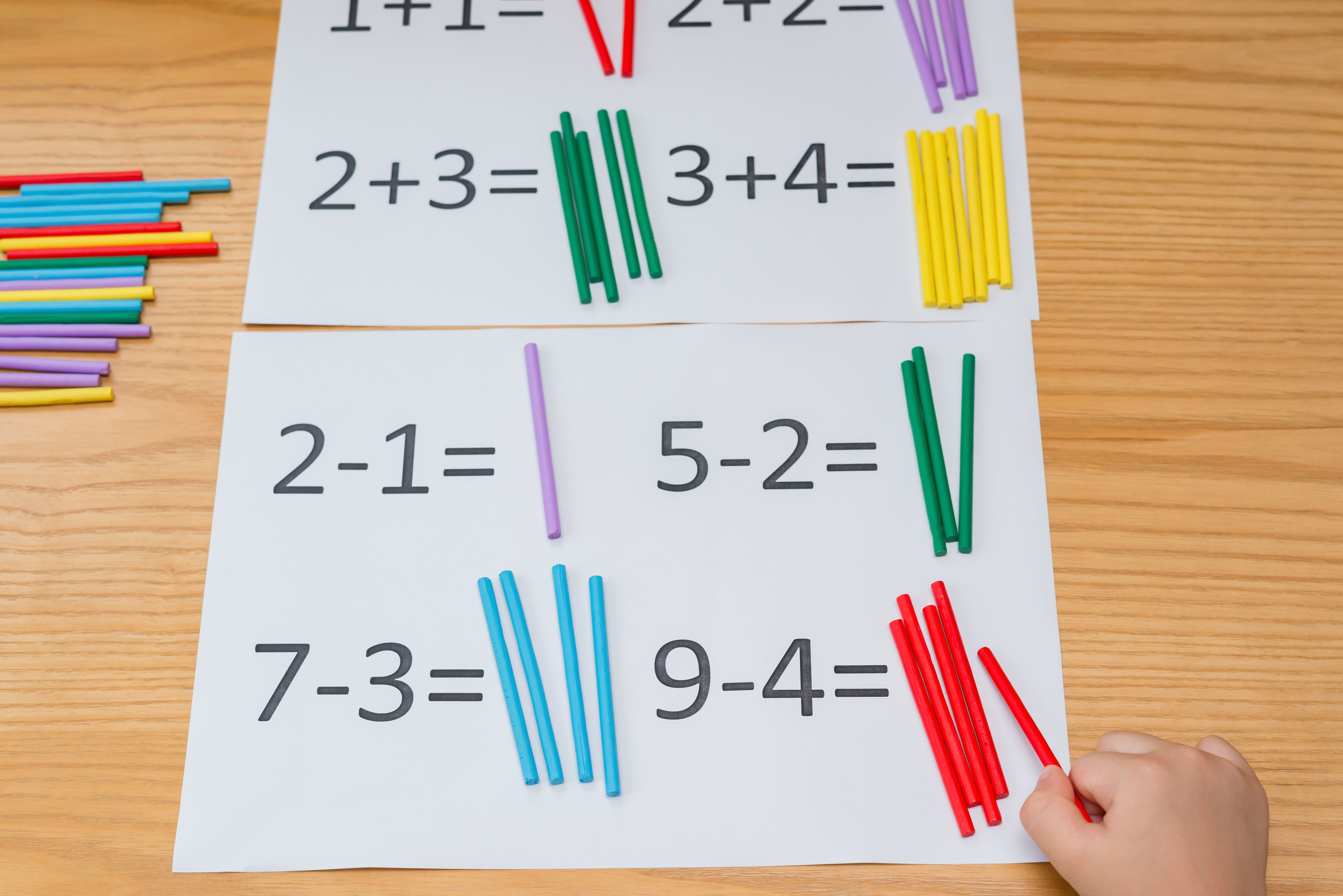
Why It Works: Tally marks provide a clear, visual way to show quantities and taking away. It also introduces grouping and counting by fives.
How to Use: Have students draw tally marks for the starting number. Cross out the number being subtracted. Count the remaining tallies.
Classroom Tip: Create laminated tally charts for reusable practice with dry-erase markers.
Bonus Idea: Incorporate themes (e.g., tally marks as raindrops, leaves, or bugs) for seasonal subtraction practice.
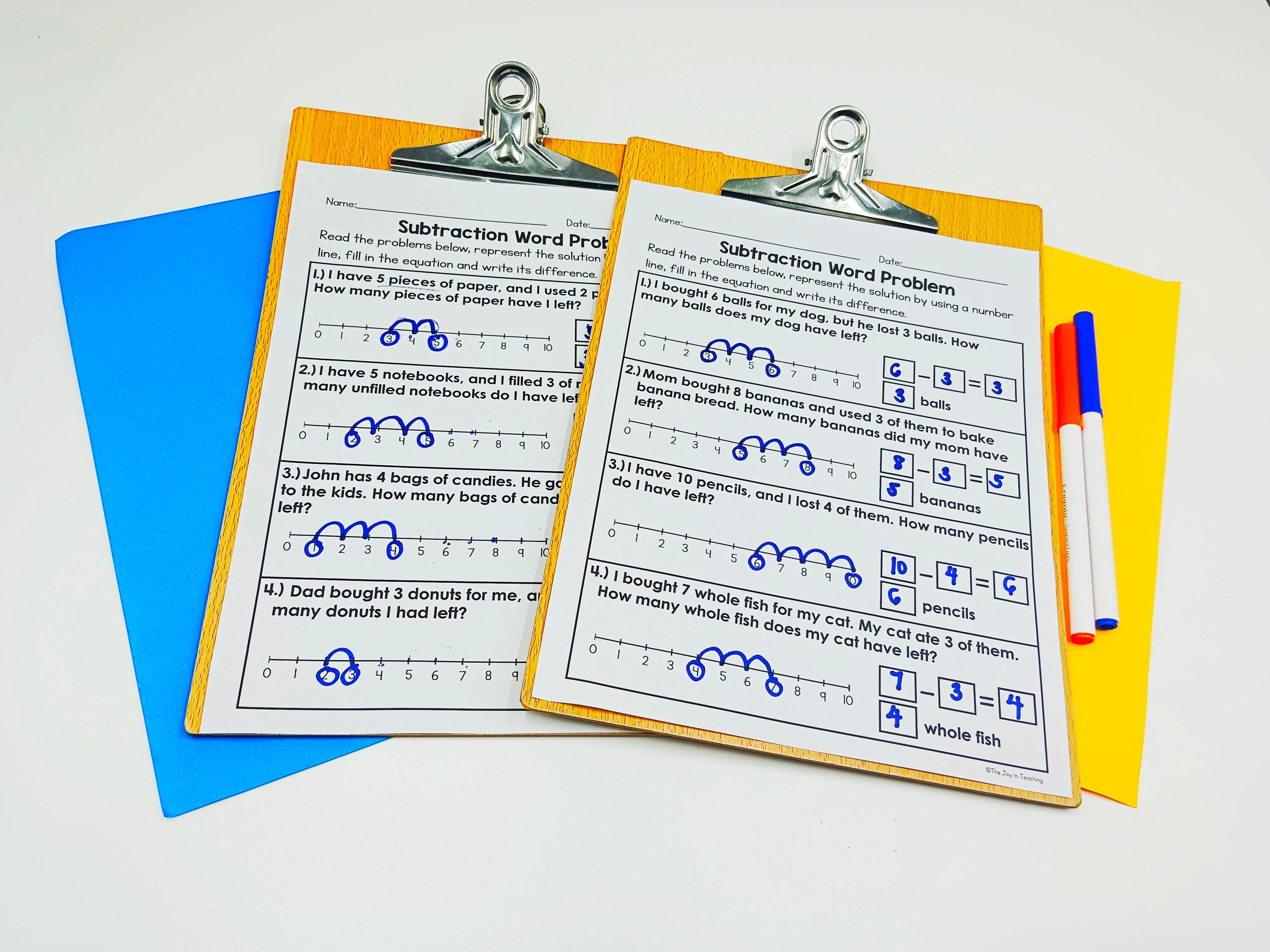
Why It Works: A number line helps students visually “jump back” and see subtraction as finding the difference or counting backward.
How to Use: Start at the larger number on the number line. Jump backwards by the number being subtracted. Land on the answer.
Variations: Horizontal number line (on paper or wall). Floor number line for kinesthetic learning (let students walk or hop backwards).
Activity Idea: Give students sticky notes to “jump” along a classroom number line and solve subtraction problems collaboratively.
4. Drawing Objects to Show Subtraction Why It Works: Drawing helps bridge the gap between concrete manipulatives and abstract symbols. Students can visually see what’s being taken away.
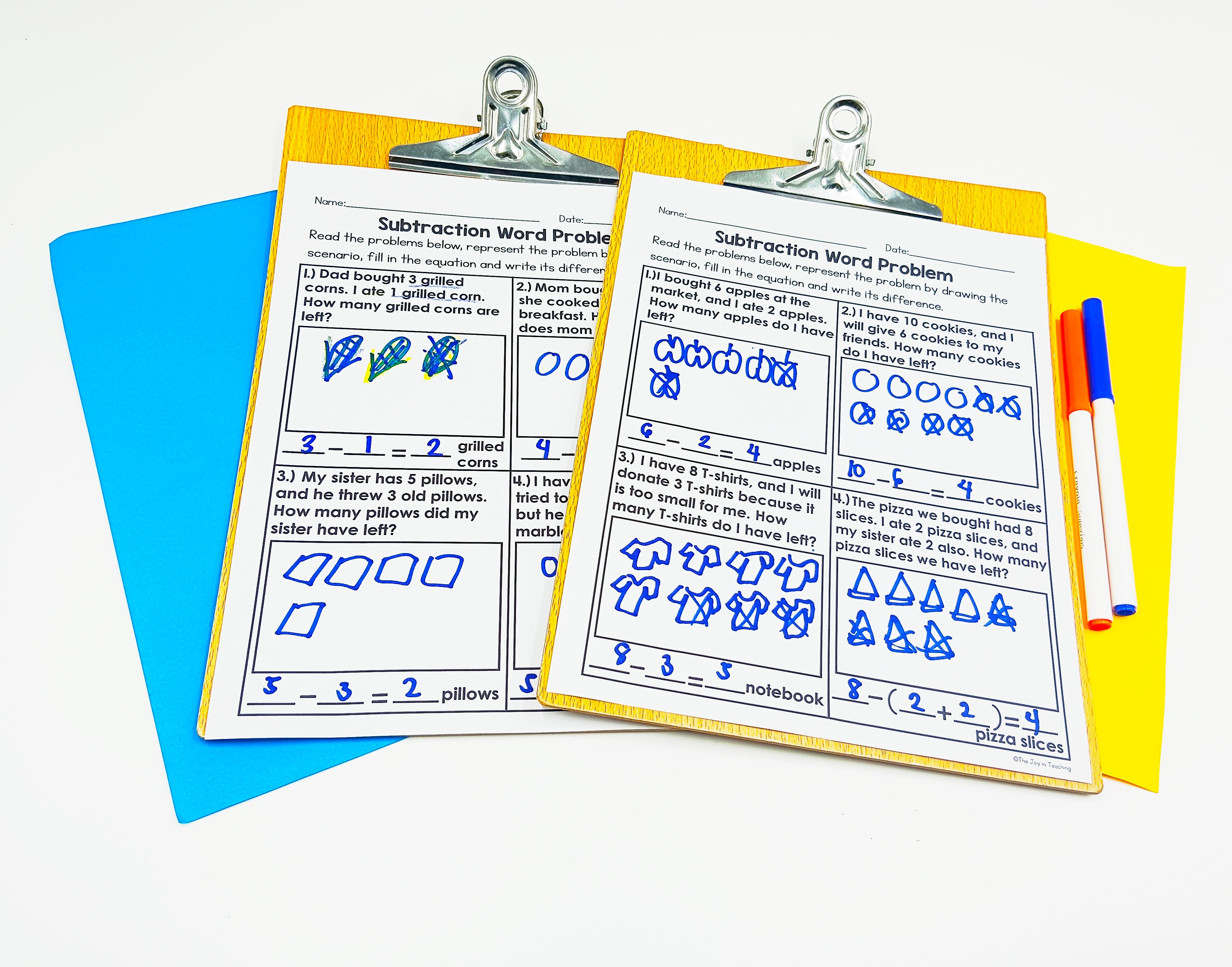
How to Use: Draw objects (e.g., circles, stars, or simple shapes). Cross out the number being subtracted. Count what remains.
Classroom Tip: Use drawing strategies in math journals to help students explain their thinking.
Extension: Add labels, such as “I had 7 apples. I gave away 3. I have 4 left.”
5. Using Real Objects and Manipulatives
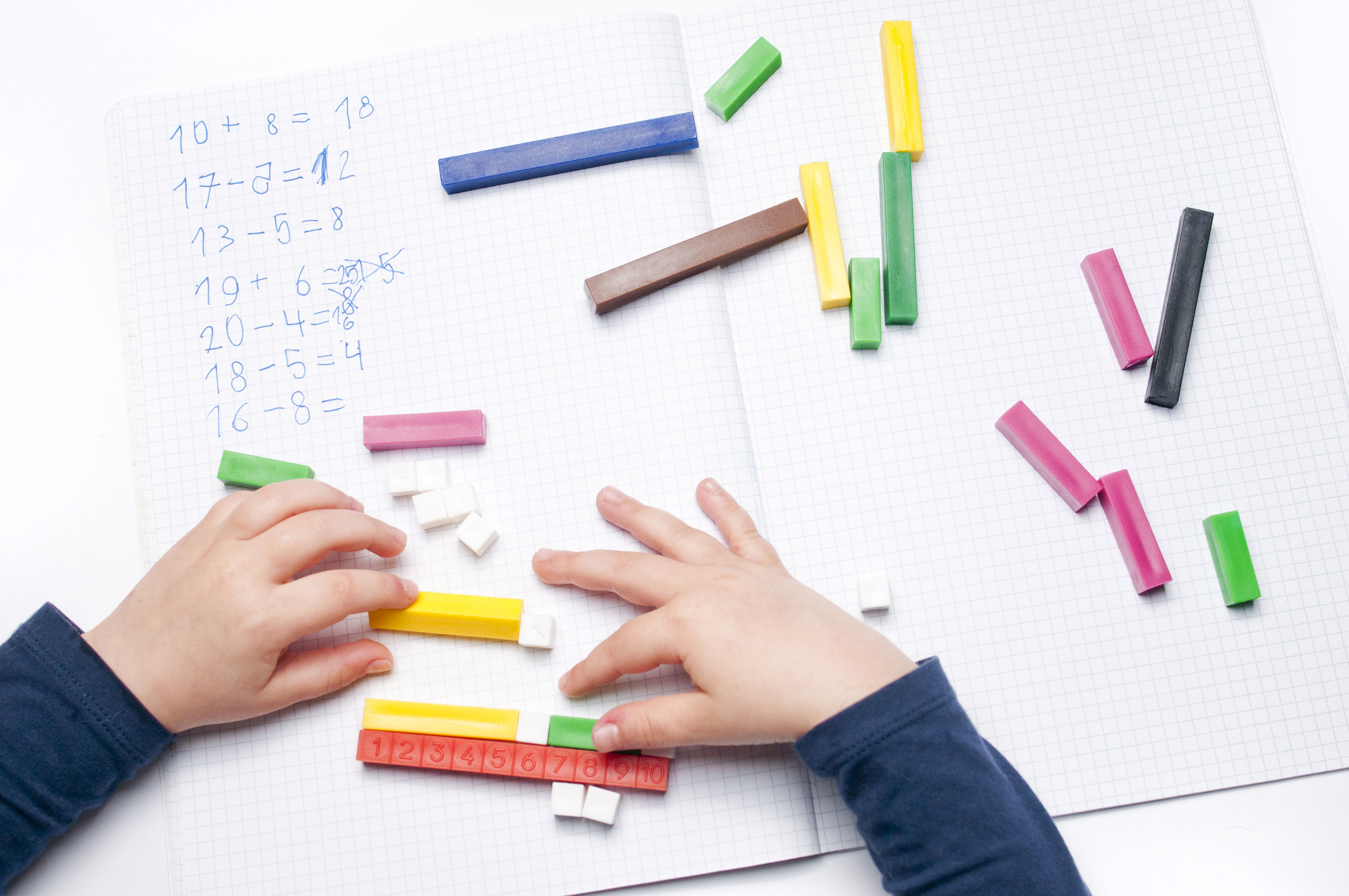
Why It Works: Subtraction becomes real when students can physically remove objects. This supports tactile and visual learners.
Tools You Can Use: Counters or cubes Buttons or beads Mini erasers (seasonal themes) Beans, pom-poms, or pennies Activity Idea: Create subtraction “story mats” where students act out word problems using small objects.
6. Subtraction Vocabulary and Symbols Key Terms to Teach:
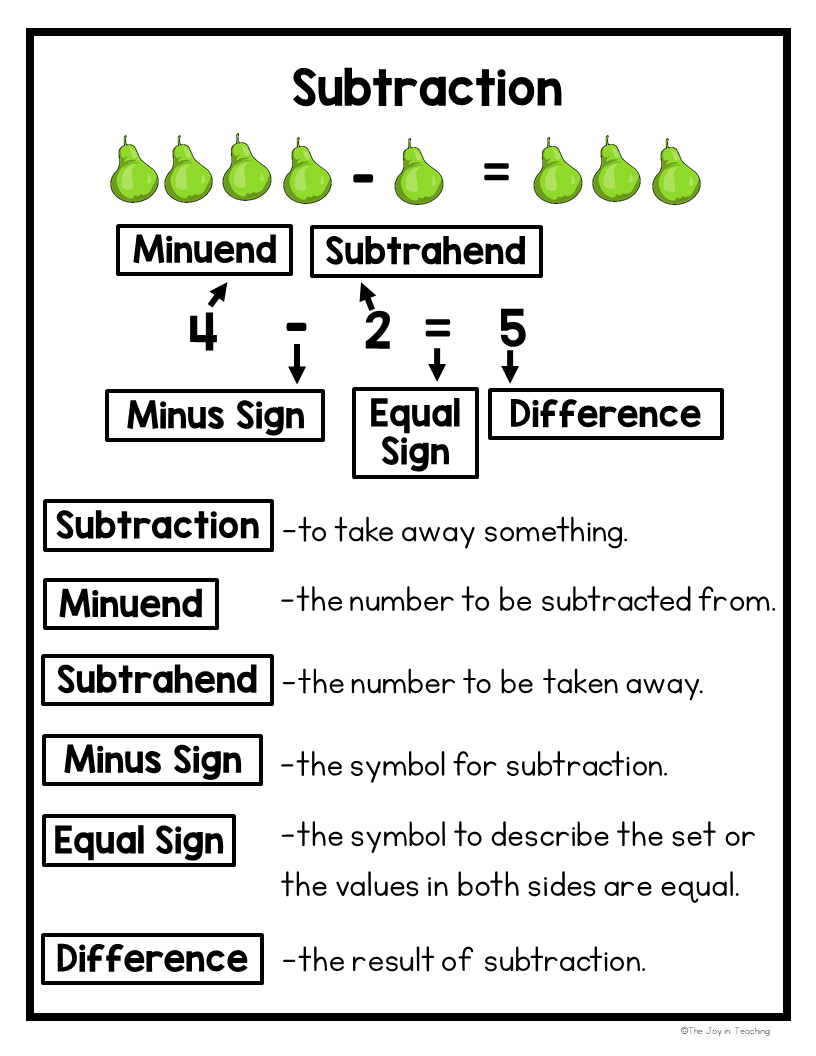
Minuend (the starting number) Subtrahend (the number being taken away) Difference (the answer) Minus sign (–) Equal sign (=)
Why It Matters: Building math vocabulary helps students understand and talk about subtraction in more precise ways. Classroom Tip: Use anchor charts with fun images (e.g., apples, candies) to show what each part of a subtraction sentence represents.
Interactive Idea: Give students number cards and symbol cards to build and label their own subtraction equations.
7. Subtraction Properties and Patterns
Important Concepts: Zero Property: Any number minus 0 is the same number (e.g., 9 – 0 = 9). Subtracting the Whole: Any number minus itself is 0 (e.g., 6 – 6 = 0).
Difference Between a Number and 1: It’s always the number before (e.g., 8 – 1 = 7).
Why It Works: Patterns help students gain confidence and improve fluency.
Activity Idea: Make a subtraction “fact family” wall to show how numbers are related through both addition and subtraction.
8. Using Ten Frames for Subtraction
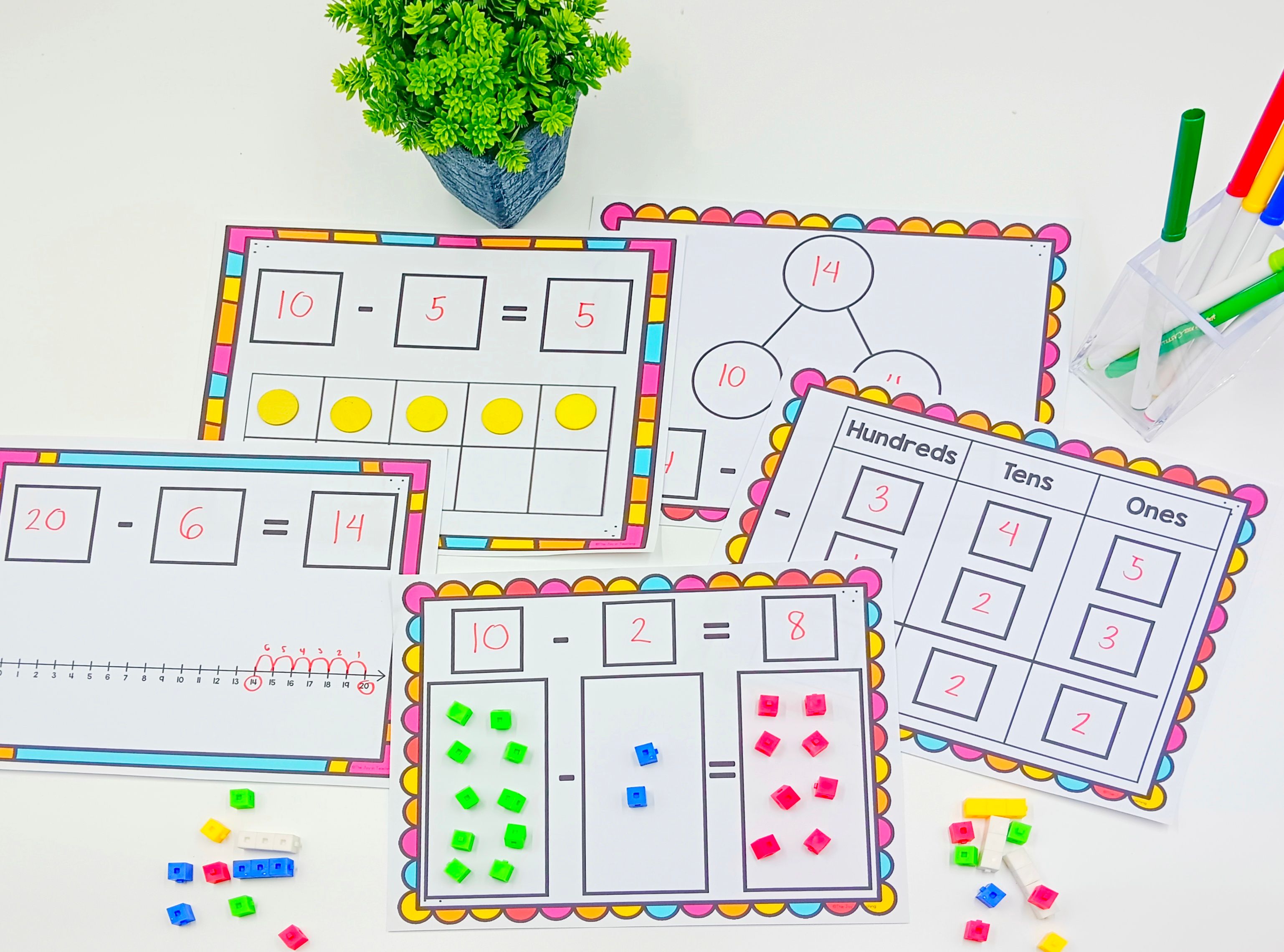
Why It Works: Ten frames help students understand how numbers are composed and decomposed. It’s a great visual for subtraction within 10 and 20.
How to Use: Fill the frame with counters to match the minuend. Remove counters to show the subtrahend. Count the remaining counters.
Classroom Tip: Use two-color counters to show both what was taken away and what remains.
Printable Resource: Laminate ten frames for reuse in centers or partner work.
9. Subtraction with Number Bonds

Why It Works: Number bonds reinforce part-part-whole thinking and help students break apart numbers mentally.
How to Use: Show the whole and one part. Have students determine the missing part (e.g., 10 – ? = 6).
Activity Idea: Use number bond cards or puzzle pieces in small groups or math centers.
10. Subtraction Stories and Word Problems
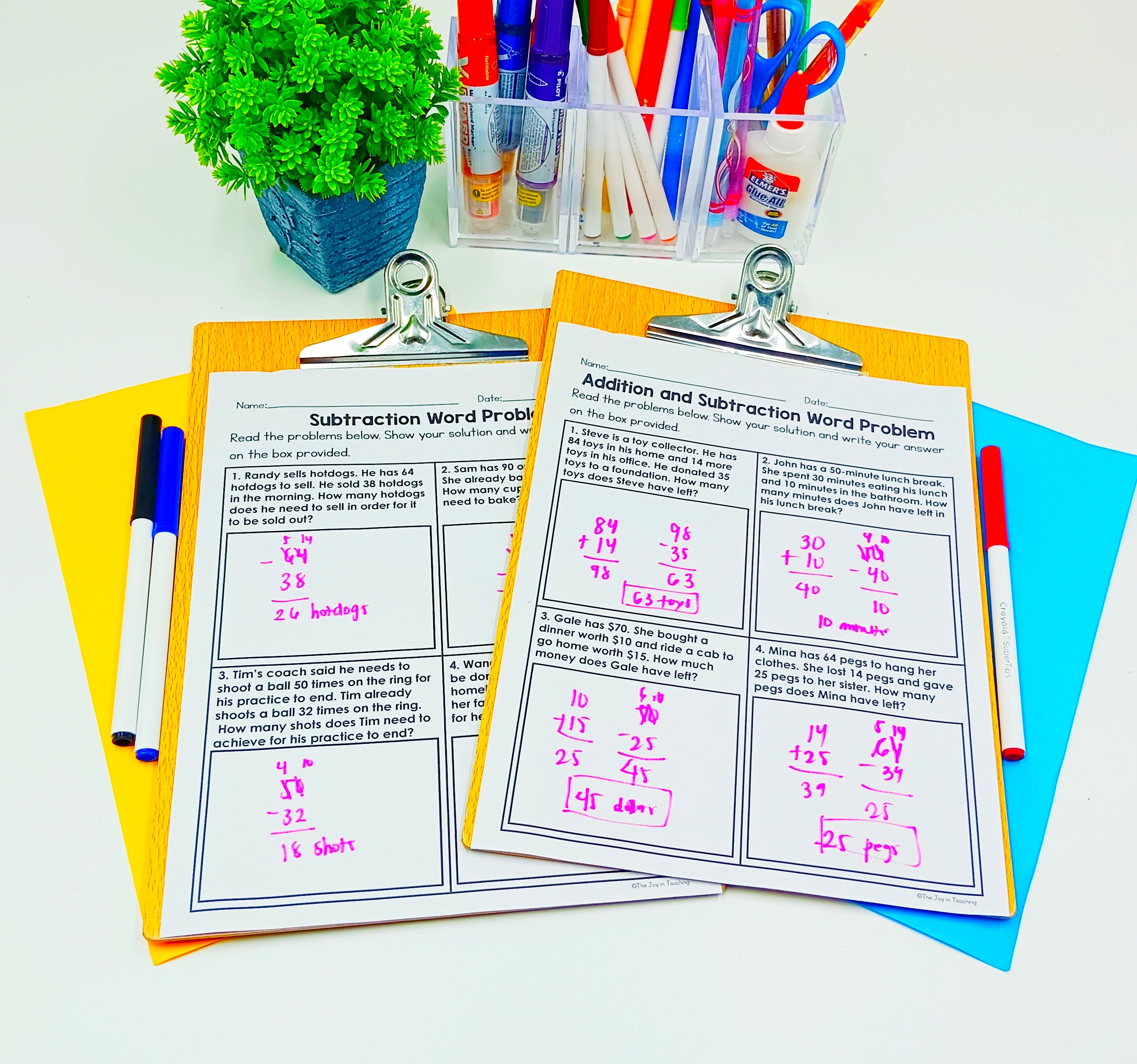
Why It Works: Word problems give subtraction a purpose and context. They also build comprehension and math talk.
How to Use: Present subtraction as a story: “Liam had 8 cookies. He ate 3. How many are left?” Act it out, draw it, or model it with objects.
Classroom Tip: Let students create their own subtraction stories using characters, animals, or classroom items.
Bonus Idea: Pair subtraction stories with drawing and writing for cross-curricular connections.
11. Subtraction Games and Centers
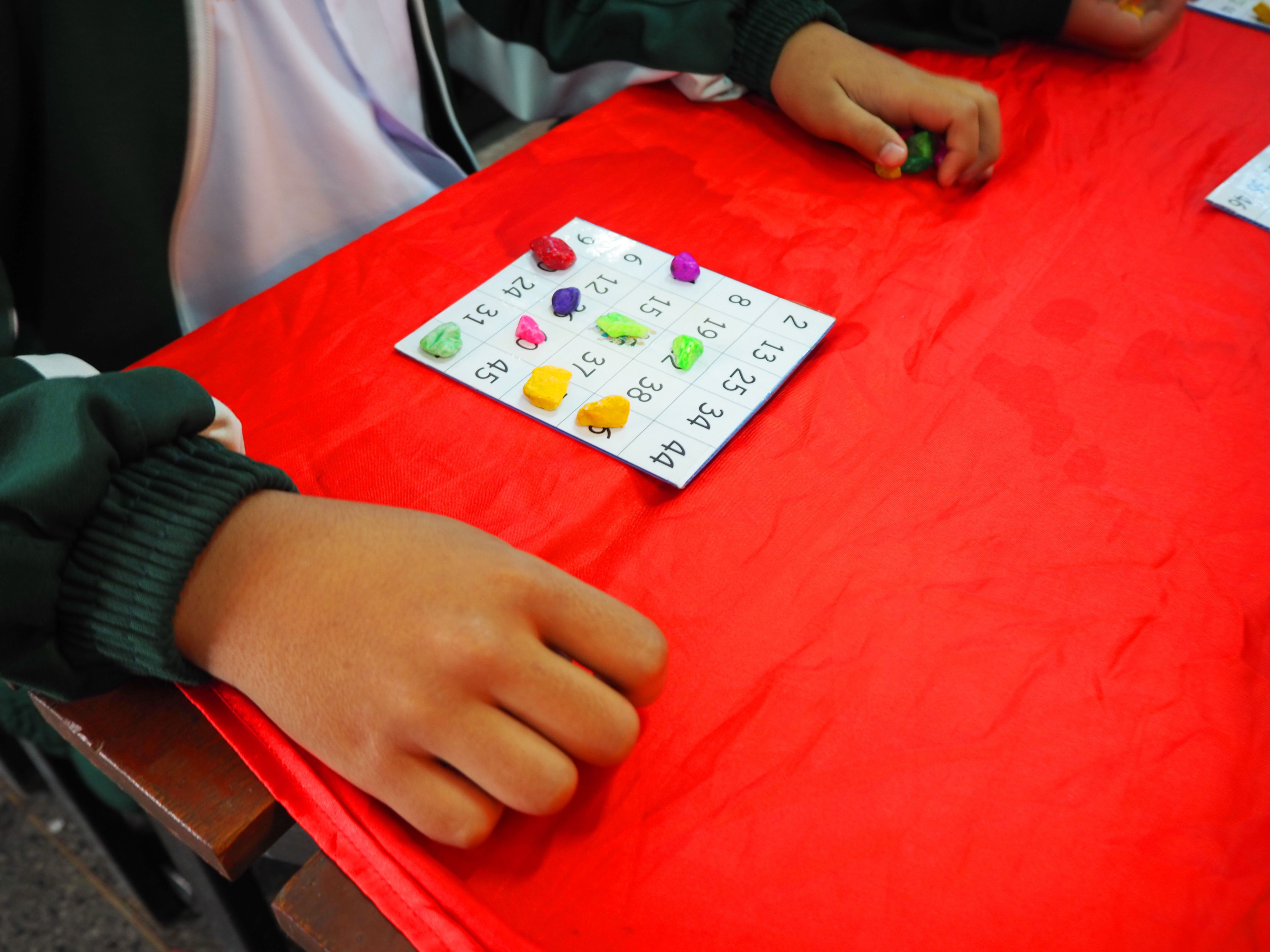
Ideas: Spin and Subtract: Use a spinner or dice to generate numbers.
Subtraction Bingo: Students solve problems and cover the correct difference.
Matching Memory: Match subtraction sentences to their answers.
Why It Works: Games provide repetition, promote engagement, and support social learning.
Classroom Tip: Set up rotation centers for independent or partner subtraction practice.
12. Technology and Digital Practice

Tools to Try: Boom Cards for interactive subtraction tasks iPad apps like SplashLearn, Khan Academy Kids, or Subtraction Smash Digital whiteboards (Jamboard, SMART Notebook) Why It Works: Technology keeps students engaged and provides instant feedback.
Classroom Tip: Use digital centers as part of your weekly rotation or assign for homework reinforcement.
13. Error Analysis and Subtraction Strategies Teaching

Students to Ask:
Did I start with the bigger number?
Did I subtract correctly?
Did I count what was left?
Strategy Examples:
Count backwards
Use fact families
Draw a picture
Use doubles and near-doubles
Use benchmarks like 10
Classroom Tip: Encourage students to solve one problem in more than one way to build flexibility.
14. Scaffolded Practice for Differentiated Needs For Struggling Learners:
Use concrete objects and visuals.
Keep numbers small (within 10).
Focus on one strategy at a time.
For On-Level Students: Introduce number lines, fact families, and subtraction stories.
For Advanced Learners: Add regrouping and multi-step problems. Connect subtraction to missing addend problems (e.g., 7 + ? = 12).
15. Subtraction Anchor Charts and Visuals
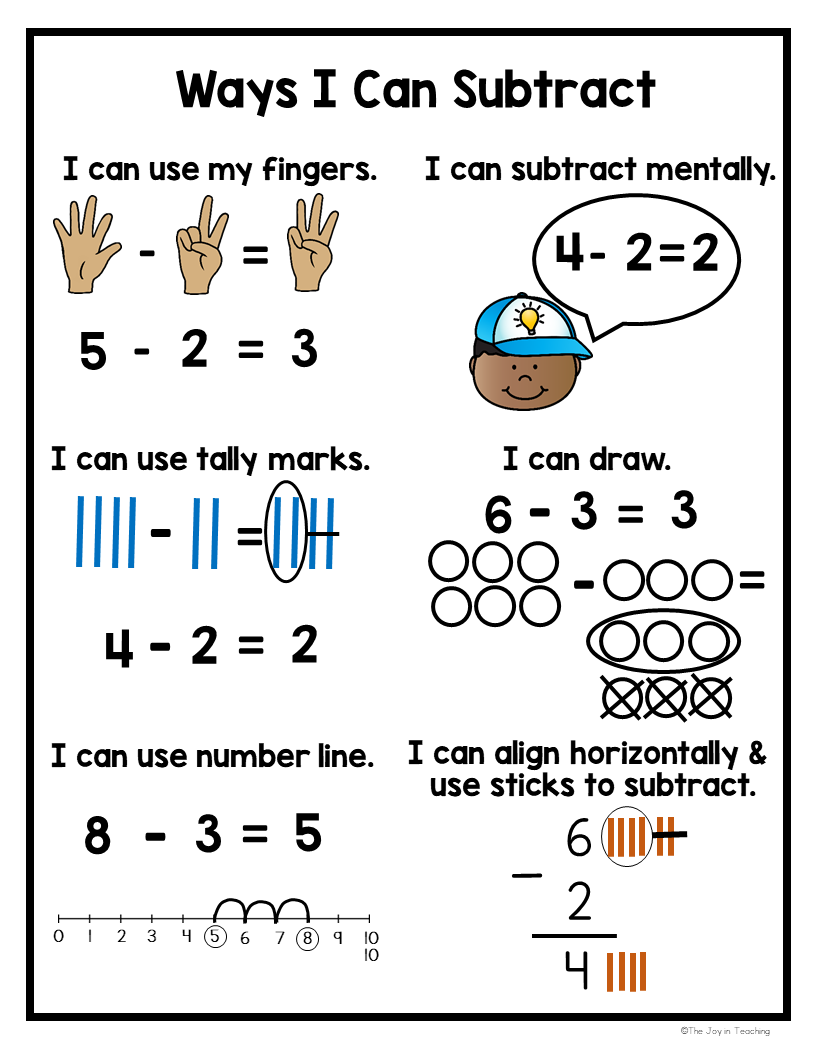
Use visuals like the ones from The Joy in Teaching to create: Subtraction Strategy
Posters Math
Vocabulary Charts
Examples of Subtraction Properties
Why It Works: Students need consistent, visual reminders they can refer to as they work independently.
Classroom Tip: Create a subtraction “strategy wall” and encourage students to explain which strategy they used and why.
Final Thoughts Subtraction is a skill that students need every day—in the classroom and beyond. By combining concrete experiences with visual strategies, vocabulary, games, and real-world connections, you can make subtraction fun, engaging, and meaningful. Whether your students are drawing pictures, using number lines, or acting out story problems, the key is providing them with multiple ways to understand and practice subtraction. The more confident they feel, the more fluent they’ll become. And remember: subtraction isn’t just about “taking away”—it’s about understanding relationships between numbers and developing problem-solving skills that last a lifetime.
Looking for ready-to-use subtraction visuals and activities? Explore The Joy in Teaching’s Subtraction Pack to bring these strategies to life in your classroom.
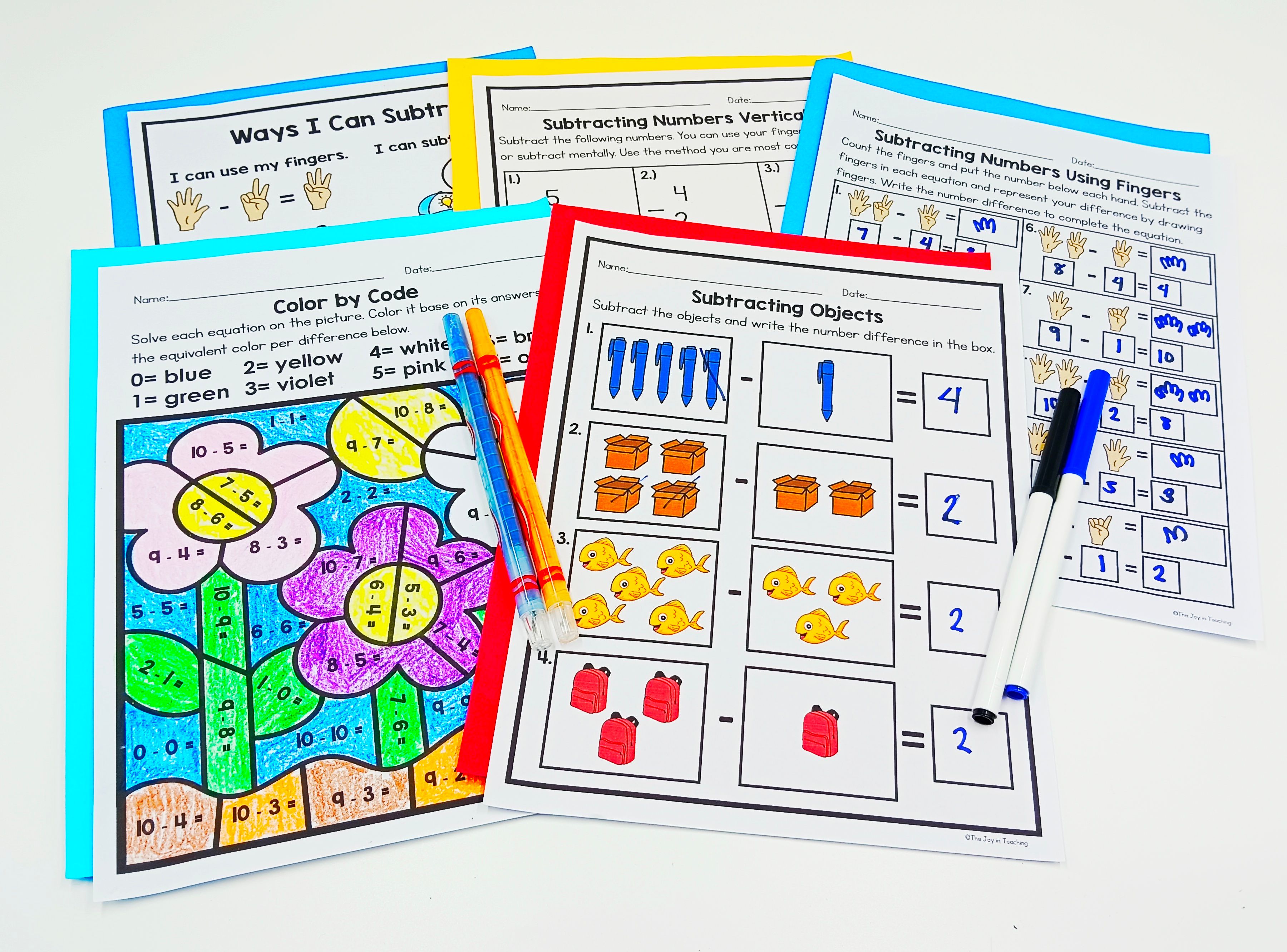
Follow Me for More Teaching Tips with Joy For more tips, resources, and a daily dose of teaching joy, follow me on:
Got questions or want to share your success stories? Drop me an email at thejoyinteaching@gmail.com. I love hearing from fellow educators and parents! Happy Teaching!
Joy Medalla
The Joy in Teaching 💛